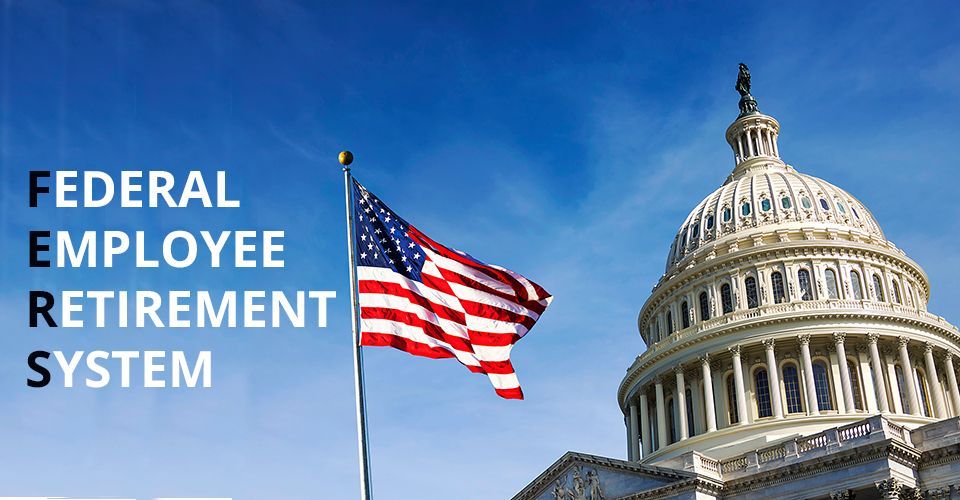Discover When You Can Retire with Full Benefits

Federal employees often ponder the critical question: "When can I retire and receive full benefits?" Understanding the eligibility criteria under the Federal Employees Retirement System (FERS) is essential for making informed retirement decisions.
Eligibility Criteria for Full Benefits
Federal employees can retire with full benefits under several conditions:
- 30 Years of Service and Minimum Retirement Age (MRA): Employees who have completed 30 years of service and have reached their MRA are eligible for full retirement benefits.
- Age 60 with 20 Years of Service: Those who are at least 60 years old and have 20 years of service can also retire with full benefits.
- Age 62 with 5 Years of Creditable Service: Employees who are 62 or older with at least five years of creditable service qualify for full benefits.
Understanding MRA + 10 Rule
For those who do not meet the above criteria, there is an option known as the MRA + 10 rule. This allows employees to retire if they have reached their MRA and have at least ten years of creditable service. However, this option comes with a reduction in pension benefits for each year under the age of 62.
Special Retirement Categories
Certain federal roles, such as law enforcement officers, air traffic controllers, and firefighters, have different retirement rules. These employees can retire at age 50 with 20 years of service or at any age with 25 years of service, receiving full benefits. It's important to understand which retirement category you fall into, as it affects when and how you can retire.
Financial Planning for Retirement
Federal employees should consider several financial aspects when planning for retirement:
- Monthly Income: Calculate the expected monthly income from the FERS pension, Thrift Savings Plan (TSP), and Social Security.
- Federal Employee Health Benefits (FEHB): Review your health insurance policy to ensure it aligns with your needs, especially as you approach Medicare eligibility.
- Long-Term Care and Life Insurance: Evaluate whether you need long-term care insurance and review your life insurance options to protect your family.
Estate Planning
As retirement approaches, it's crucial to engage in estate planning. Ensure that you have a will, consider setting up a trust, and update beneficiary designations to protect your loved ones and ensure your assets are distributed according to your wishes.
Prep for Retirement Now!
Preparation is key to a successful retirement. Federal employees should understand their eligibility for retirement benefits, plan their finances carefully, and seek guidance from a retirement coach if needed. Taking these steps will help ensure a confident transition into retirement.
Planning for retirement as a federal employee involves navigating a complex landscape of benefits and retirement rules. There is a wealth of information to review and consider before making the decision to retire, encompassing aspects such as pension calculations, health insurance options, and potential changes to your financial situation. Given the intricacies of federal employee retirement, it's crucial to have a comprehensive understanding of how your years of service, age, and other factors will impact your retirement benefits. To ensure you make informed decisions and maximize your retirement potential, the most sensible step to take after you hit age 50 is to connect with a retirement expert
who specializes in federal benefits and can provide personalized guidance tailored to your specific circumstances.
More Featured Articles

So, you've dedicated years of service to the federal government. Now, the prospect of retirement shimmers on the horizon, promising a life of leisure, travel, and pursuing passions long set aside. But before you say goodbye to the 9-to-5, there's a crucial decision to make: when exactly should you retire? While any day that marks your escape from the daily grind might seem like a good one, strategically choosing your retirement date can significantly impact your federal employee benefits, potentially adding thousands to your retirement income. This isn't just about picking a date that's convenient; it's about understanding the complex interplay of federal retirement rules and maximizing your hard-earned benefits.

Federal employees, especially those nearing retirement age, should be aware of potential changes that could impact their retirement benefits. While details are still emerging, a new Department of Government Efficiency (DOGE) is being discussed, which could have implications for federal operations and retirement benefits. According to recent reports, this new department aims to increase transparency and efficiency in government operations. However, the full scope and implications of this initiative remain unclear. As with any significant change in government structure, there may be unforeseen consequences that could affect various aspects of federal employment, including the Federal Employee Retirement System (FERS) benefits.

The Federal Employees Retirement System (FERS) Supplement, also known as the Special Retirement Supplement (SRS), is a valuable benefit for eligible federal employees who retire before age 62. However, many retirees are surprised to learn that this supplement is subject to an earnings test, which can reduce or eliminate the benefit based on post-retirement income. Understanding how this earnings test works is crucial for federal retirees planning their financial future.

Federal workers are bracing for a significant increase in their health insurance costs come 2025. The Office of Personnel Management (OPM) has announced that Federal Employees Health Benefits (FEHB) program premiums will rise by an average of 13.5% next year. This marks the largest increase in almost two decades and comes on the heels of already substantial hikes in recent years.

Social Security benefits play a crucial role in the financial security of millions of Americans during retirement. However, navigating the complex system of rules and regulations surrounding Social Security can be challenging. This guide aims to help you understand the key aspects of Social Security and provide strategies to maximize your benefits.

So, what exactly is Indexed Universal Life (IUL) insurance? Well, it's a type of permanent life insurance that offers a cash value component in addition to a death benefit. Unlike traditional whole life insurance, which offers a fixed interest rate, IUL insurance allows policyholders to potentially earn returns based on the performance of a market index, such as the S&P 500. This means that your cash value has the opportunity to grow at a faster rate than with a traditional whole life policy. Pretty cool, right?

For a long time, inflation was an afterthought when it came to retirement planning. People often focused on saving a specific nest egg, diversifying their investments, and estimating future expenses, paying little attention to inflation. This once-overlooked economic factor has taken center stage, commanding the attention it deserves. The average inflation rate over the last century in the United States has hovered around 3%, demonstrating that inflation is a persistent force that can’t be ignored. When planning for retirement, individuals often create spending plans based on their anticipated expenses. They calculate how much they will need each year to maintain their desired standard of living. What many fail to account for is the corrosive effect of inflation. Higher non-transitory inflation rates can swiftly erode the purchasing power of retirees’ savings. In a matter of a few years, the dollars they saved diligently over decades may lose a significant portion of their value. This can force retirees to make difficult choices, such as cutting back on essential expenses or dipping into their principal savings, both of which can have dire consequences for the sustainability of their retirement funds. To protect a retirement plan from the ravages of inflation, it’s essential to incorporate inflation-adjusted strategies. This may involve investing in assets that historically outpace inflation, like stocks or real estate, and considering annuities or other financial instruments designed to provide reliable income streams that can grow with the cost of living. Additionally, it is crucial to periodically reassess your retirement plan to ensure it remains aligned with your evolving needs and the changing economic landscape. By acknowledging the real threat of inflation and adapting your retirement plan accordingly, you can enhance your financial security and maintain a comfortable lifestyle throughout your retirement years. Find other ways to cut costs in retirement to mitigate inflation's impact. Consider moving to a state with no income or sales taxes, paying off your mortgage, or downsizing to a smaller home. Reducing your debt now, while the US Dollar maintains its current buying power, will significantly lessen inflation's effect on your finances. Plan Ahead for a Comfortable Retirement When preparing your retirement plan, make sure to account for inflation's effects on your portfolio and budget. The steps you take now can help you achieve the retirement of your dreams. If you need personalized advice, our retirement coaches are available to assist you. Federal Retirement Experts offers a 3-Step Retirement Plan for federal employees. We'll work with you to create a personalized strategy that helps you navigate separation and sail smoothly into a financially secure retirement. We provide federal employees aged 50 and older with our free Federal Employee Benefits Analysis . This report is your tool to plan ahead and help you to better plan for retirement. To get connected with one of Federal Retirement Experts’ retirement coaches, schedule a no cost, 30-minute consultation . Our expert coaches will answer your CSRS, FERS and TSP questions, explain how your federal benefits work in retirement, and calculate a projected retirement income.


